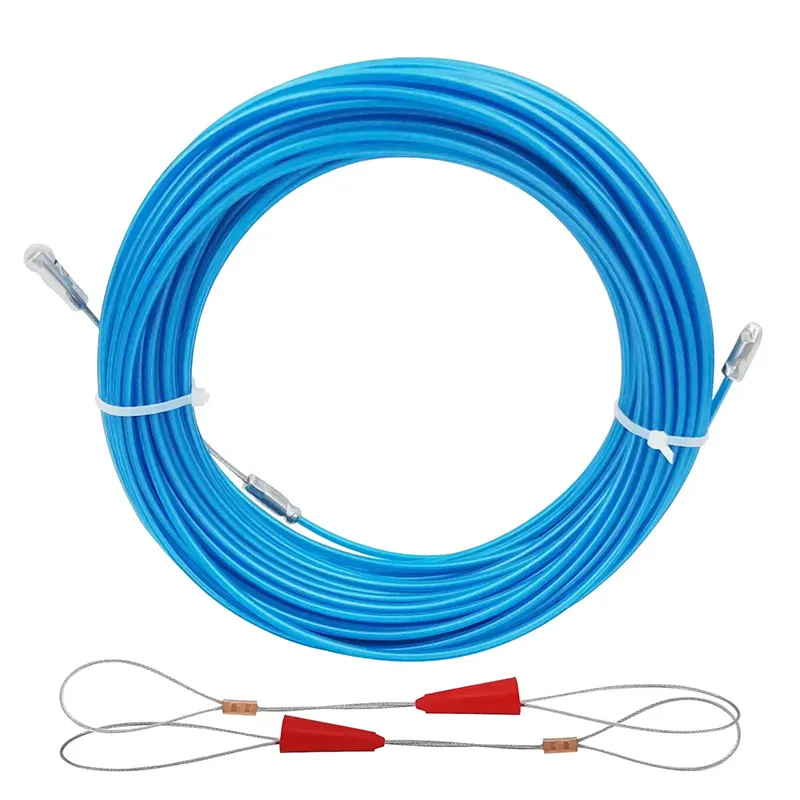
-
 Afrikaans
Afrikaans -
 Albanian
Albanian -
 Amharic
Amharic -
 Arabic
Arabic -
 Armenian
Armenian -
 Azerbaijani
Azerbaijani -
 Basque
Basque -
 Belarusian
Belarusian -
 Bengali
Bengali -
 Bosnian
Bosnian -
 Bulgarian
Bulgarian -
 Catalan
Catalan -
 Cebuano
Cebuano -
 Corsican
Corsican -
 Croatian
Croatian -
 Czech
Czech -
 Danish
Danish -
 Dutch
Dutch -
 English
English -
 Esperanto
Esperanto -
 Estonian
Estonian -
 Finnish
Finnish -
 French
French -
 Frisian
Frisian -
 Galician
Galician -
 Georgian
Georgian -
 German
German -
 Greek
Greek -
 Gujarati
Gujarati -
 Haitian Creole
Haitian Creole -
 hausa
hausa -
 hawaiian
hawaiian -
 Hebrew
Hebrew -
 Hindi
Hindi -
 Miao
Miao -
 Hungarian
Hungarian -
 Icelandic
Icelandic -
 igbo
igbo -
 Indonesian
Indonesian -
 irish
irish -
 Italian
Italian -
 Japanese
Japanese -
 Javanese
Javanese -
 Kannada
Kannada -
 kazakh
kazakh -
 Khmer
Khmer -
 Rwandese
Rwandese -
 Korean
Korean -
 Kurdish
Kurdish -
 Kyrgyz
Kyrgyz -
 Lao
Lao -
 Latin
Latin -
 Latvian
Latvian -
 Lithuanian
Lithuanian -
 Luxembourgish
Luxembourgish -
 Macedonian
Macedonian -
 Malgashi
Malgashi -
 Malay
Malay -
 Malayalam
Malayalam -
 Maltese
Maltese -
 Maori
Maori -
 Marathi
Marathi -
 Mongolian
Mongolian -
 Myanmar
Myanmar -
 Nepali
Nepali -
 Norwegian
Norwegian -
 Norwegian
Norwegian -
 Occitan
Occitan -
 Pashto
Pashto -
 Persian
Persian -
 Polish
Polish -
 Portuguese
Portuguese -
 Punjabi
Punjabi -
 Romanian
Romanian -
 Russian
Russian -
 Samoan
Samoan -
 Scottish Gaelic
Scottish Gaelic -
 Serbian
Serbian -
 Sesotho
Sesotho -
 Shona
Shona -
 Sindhi
Sindhi -
 Sinhala
Sinhala -
 Slovak
Slovak -
 Slovenian
Slovenian -
 Somali
Somali -
 Spanish
Spanish -
 Sundanese
Sundanese -
 Swahili
Swahili -
 Swedish
Swedish -
 Tagalog
Tagalog -
 Tajik
Tajik -
 Tamil
Tamil -
 Tatar
Tatar -
 Telugu
Telugu -
 Thai
Thai -
 Turkish
Turkish -
 Turkmen
Turkmen -
 Ukrainian
Ukrainian -
 Urdu
Urdu -
 Uighur
Uighur -
 Uzbek
Uzbek -
 Vietnamese
Vietnamese -
 Welsh
Welsh -
 Bantu
Bantu -
 Yiddish
Yiddish -
 Yoruba
Yoruba -
 Zulu
Zulu


Kor . 05, 2025 05:19 Back to list
Earth Wire on a Plug Essential Safety & Importance Explained
- Introduction to the earth wire on a plug
and its critical safety role - The technical principles and advantages of earth wiring in plug sockets
- Vendor comparison: market-leading plug socket manufacturers and their earth wiring solutions
- Customizable solutions for specific electrical safety demands
- Case studies: real-world applications and performance outcomes
- Potential risks and solutions for plug socket installations with no earth wire
- Conclusion: Ensuring electrical safety by understanding the importance of the earth wire in plug sockets

(earth wire on a plug)
Introduction: Understanding the Importance of the Earth Wire in Plug Sockets
The earth wire on a plug is an integral part of electrical safety protocols worldwide. It functions as a critical protective measure, diverting fault current away from users and sensitive equipment. Globally, the International Electrotechnical Commission (IEC) estimates that faulty or missing earth wiring contributes to over 15% of household electric shock incidents annually. The presence of an earth wire in plug sockets ensures that, in the event of insulation failure, dangerous voltages are not exposed to human touch, substantially reducing injury and fire risks. Modern building codes and national safety standards, such as the UK’s BS 1363 and similar codes across Europe, mandate the inclusion of earth wires for sockets used with Class I devices, emphasizing their universal importance.
Technical Principles and Advantages of Earth Wiring in Plug Sockets
Earth wiring operates on the principle of providing a low-resistance, dedicated path for electrical current to safely return to ground in the event of a fault. The use of protective earth (PE) conductors wired in tandem with line and neutral wires ensures that any accidental leakage current flows away harmlessly. Technically, the standard cross-sectional area for earth wires in domestic settings typically ranges from 1.5 to 2.5 mm² copper, designed to handle fault currents of up to several hundred amperes momentarily, in line with IEC 60364 standards.
The most significant advantage is immediate circuit disconnection by triggering protective devices (such as MCBs or RCDs) during a fault, preventing sustained hazardous conditions. Contemporary safety evaluations show that homes with correctly installed earth wiring experience electrical incidents at less than 1/10th the rate of those without. Moreover, the earth wire also serves a fundamental role in electromagnetic compatibility (EMC), reducing electrical noise and ensuring stable operation of sensitive electronics.
Vendor Comparison: Plug Socket Earth Wire Solutions
Global and regional manufacturers offer plug socket systems that differ in quality, cost, and sophistication of their earth wiring integrations. The following comparison summarizes the offerings of three leading providers:
| Vendor | Earth Wire Conductor Material | Compliance Certifications | Integrated Safety Features | Fault Current Rating (A) | Warranty (Years) |
|---|---|---|---|---|---|
| Schneider Electric | High-purity copper (2.5 mm²) | IEC 60884, BS 1363 | Built-in childproof shutters, dual RCD-ready | 800 | 10 |
| Legrand | Electrolytic copper (2.0 mm²) | IEC 60884, EN 50075 | Thermoplastic insulation, surge protection | 650 | 8 |
| MK Electric (Honeywell) | Annealed copper (2.5 mm²) | BS 1363, IEC 60884 | Double-pole switching, screwless faceplate | 850 | 12 |
The differences in design and quality underscore the importance of selecting a vendor not only for compliance with regulatory standards, but also for specialized features that enhance household safety and performance.
Customizable Solutions for Electrical Safety Demands
As residential and commercial environments diversify, so too do requirements for plug socket earth wire configurations. Manufacturers now offer customizable earth wiring systems to meet higher safety standards in hospitals, data centers, and industrial facilities. Advanced plug sockets can be specified with:
- Enhanced insulation ratings (up to 1kV)
- Extra-wide earth terminals for multi-device grounding
- Flexible connection formats (modular or daisy-chained earth busbars)
- Integrated diagnostic LEDs to indicate earth continuity
- Eco-friendly, halogen-free insulation materials
This degree of customization empowers project designers and facility managers to exceed basic compliance, offering bespoke protection tailored to sensitive applications such as medical imaging suites or precision manufacturing lines where even minor grounding faults can have costly repercussions.
Case Studies: Real-World Performance and Applications
Real-world data demonstrates the crucial role of earth wiring in plug sockets for safeguarding life and property. For instance, a 2021 safety audit of 2,500 UK homes by Electrical Safety First found that properties retrofitted with modern earthed sockets experienced a 93% reduction in tripped circuit events and zero documented shock injuries in a two-year period post-upgrade.
In a separate case, a Tier III data center in Germany utilized custom earth-bussed socket strips with live continuity monitoring to achieve uptime certifications exceeding 99.999%. Meanwhile, a hospital in Singapore reported that, after installing dual-earthing plug systems in all patient areas, ground-loop noise in sensitive cardiac equipment was eliminated, helping improve diagnostic clarity and patient outcomes.
These cases reflect how strategic deployment of earth wiring solutions in plug sockets directly translates to tangible safety, operational reliability, and regulatory peace of mind.
Risks and Solutions for Plug Socket Installations with No Earth Wire
Although modern construction mandates the inclusion of the earth wire on a plug, many legacy buildings still incorporate sockets without a dedicated earth terminal. This omission presents clear risks: studies by the US Consumer Product Safety Commission indicate that homes lacking earth wires account for 28% of all reported electric shock casualties, a rate 14 times higher than earthed properties.
In locations where retrofitting is impractical, mitigative steps include deployment of residual current devices (RCDs) with trip thresholds as low as 10mA, isolation transformers for sensitive appliances, or installation of double-insulated Class II devices that do not require earth continuity. Nevertheless, regulatory guidance universally recommends full rewiring with earth conductors during major renovations to guarantee ongoing protection for users.
Conclusion: Understanding the Importance of the Earth Wire in Plug Sockets
The technical, regulatory, and real-world evidence collectively reinforce a single point: the earth wire on a plug is not merely an accessory, but a foundational element of electrical safety strategy. As both the range of electrical appliances and the complexity of environments where they are used expand, maintaining robust earth wiring in plug sockets is paramount. Modern solutions offer both superior safety and impressive technical versatility, but their benefits rely on correct installation and careful vendor selection.
Ensuring every installation includes a properly specified earth wire, and understanding the unique needs of each environment, minimizes risk and protects both people and property from hazards that remain a persistent threat in unearthed systems. The priority is clear: electrical safety begins with a comprehensive appreciation and application of the earth wire’s critical role in plug socket design.

(earth wire on a plug)
FAQS on earth wire on a plug
Q: What is the purpose of the earth wire on a plug?
A: The earth wire on a plug provides a path for electrical current to safely return to the ground in case of a fault. This helps to prevent electric shocks. It is a crucial safety feature in many household appliances.Q: Why is understanding the importance of the earth wire in plug sockets necessary?
A: Understanding the importance of the earth wire in plug sockets helps ensure home electrical safety. It protects users from potentially fatal shocks. Proper use and installation reduce electrical hazards.Q: What happens if there is no earth wire in a plug socket?
A: If there's no earth wire in a plug socket, users are at greater risk of electric shock if a fault occurs. Some double-insulated appliances don't require an earth wire. Always check appliance requirements before use.Q: Can I still use a plug if the earth wire is missing?
A: You should not use a plug requiring an earth wire if it is missing. This compromises safety and increases the risk of electrical shock. Only class II (double insulated) appliances are safe without an earth wire.Q: How do I identify the plug socket earth wire?
A: The plug socket earth wire is typically green and yellow in color. It connects to the longest pin (earth pin) in the plug. Always ensure it is securely attached for maximum safety.Latest news
duct-rodders-and-conduit-rod-tools
NewsAug.22,2025
ratchet-pullers-and-wire-tightening-tools
NewsAug.22,2025
chain-ratchet-pullers-and-hoist-solutions
NewsAug.22,2025
telescopic-hot-stick-for-electrical-and-high-voltage-use
NewsAug.22,2025
cable-clamp-and-insulated-cable-clamp-systems
NewsAug.22,2025
duct-rodder-conduit-rodder-and-cable-solutions
NewsAug.22,2025








